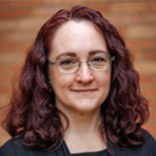Translational Pathology provides high-plex immunohistochemistry staining (PhenoCycler, aka CODEX), IHC-related image analysis, and expertise services and support in both collaborative and fee-for-service projects.
Services
Mapping Cells in Tissue | Image Analysis | Professional Support
We work with researchers to map the distribution of cells in tissues.
- We use Akoya’s PhenoCycler-Fusion platform to provide high-plex, spatial proteomics images using 40+ markers on a single, 4-micron thick section of tissue or tissue microarray.
- We brought over 60 antibodies online while developing the technology at Fred Hutch and continue to expand our menu.



A PhenoCycler-stained lung cancer tissue microarray (TMA) viewed at the block, individual core, and tissue levels. Courtesy of Dr. McGarry Houghton, Fred Hutch.
The Akoya PhenoCycler platform (aka CODEX) employs barcode-conjugated antibodies against targets of interest followed by an iterative process of revealing up to three antibodies at a time via fluorescently tagged reporters. The reveal, image capture, and reporter dissociation steps are accomplished via microfluidics in a Fusion microscope allowing the process to be automated with minimal tissue disturbance which is important for precious and delicate samples. The output is Akoya's proprietary, compressed QPTIFF image format which is analyzable with many common IHC image analysis software packages (e.g., HALO and QuPath).


Image Analysis
We work with researchers, pathologists, and bioinformatics teams to analyze spatial proteomics images.
- Analyze most spatial proteomic images ranging from single-marker IHC to high-plex PhenoCycler using open source QuPath, Indica Labs’ HALO, and/or Enable Medicine’s analysis platforms. Data output can range from basic cellular segmentation to phenotyping and spatial analysis.
- Integrate workflows with pathologists and bioinformaticians to streamline analysis.
- Assist investigators using QuPath, HALO, and Enable Medicine image analysis software packages. Note that HALO assistance requires initial training through Experimental Histopathology.



Professional Support
- We support programs by bridging the gap between an investigator’s tissue-related questions and the resources to answer those questions, with a particular focus on spatial proteomics assays and analysis tools.
- We can also assist with or help manage spatial proteomics projects including liaising with other Fred Hutch histology labs.
Contact Us
